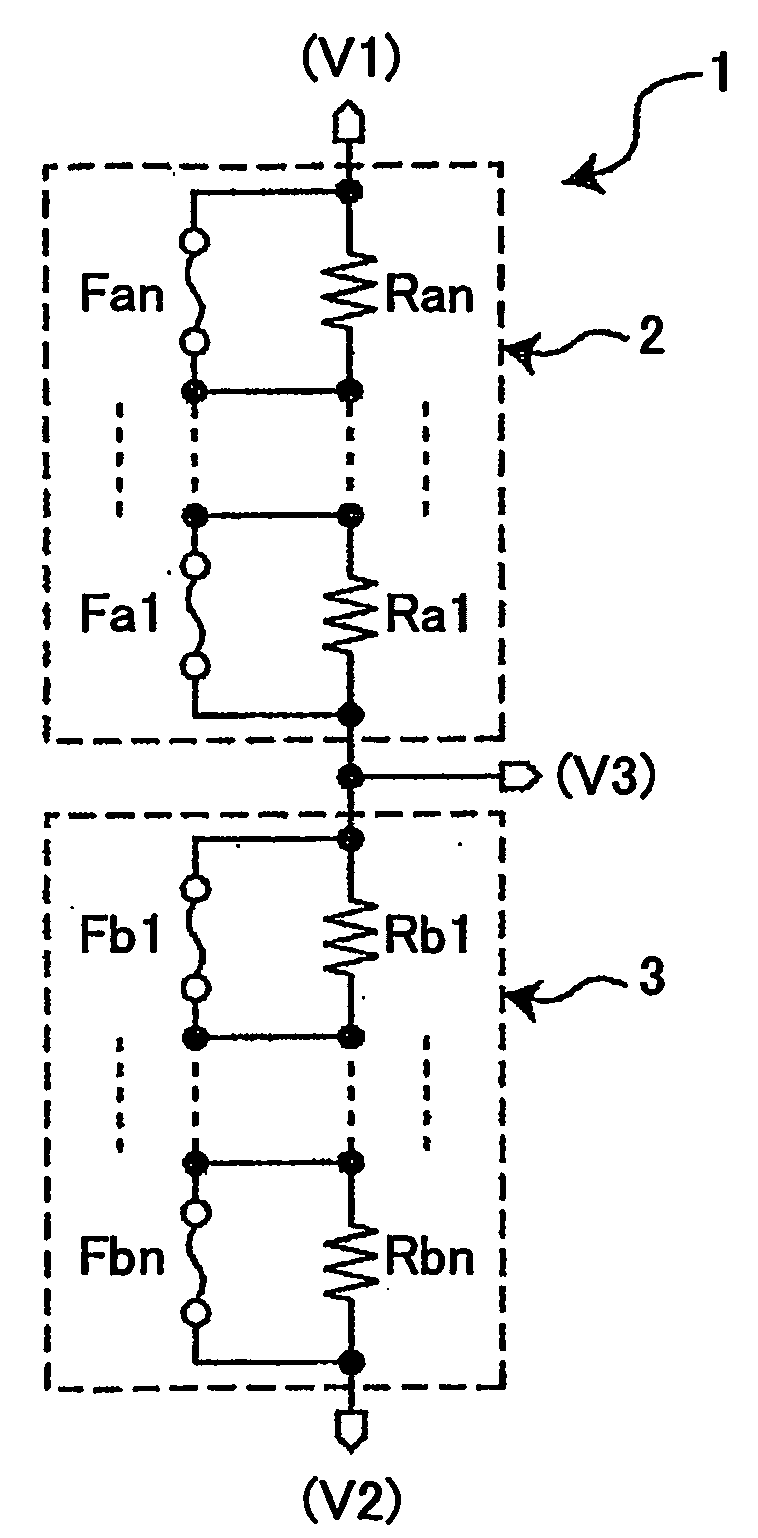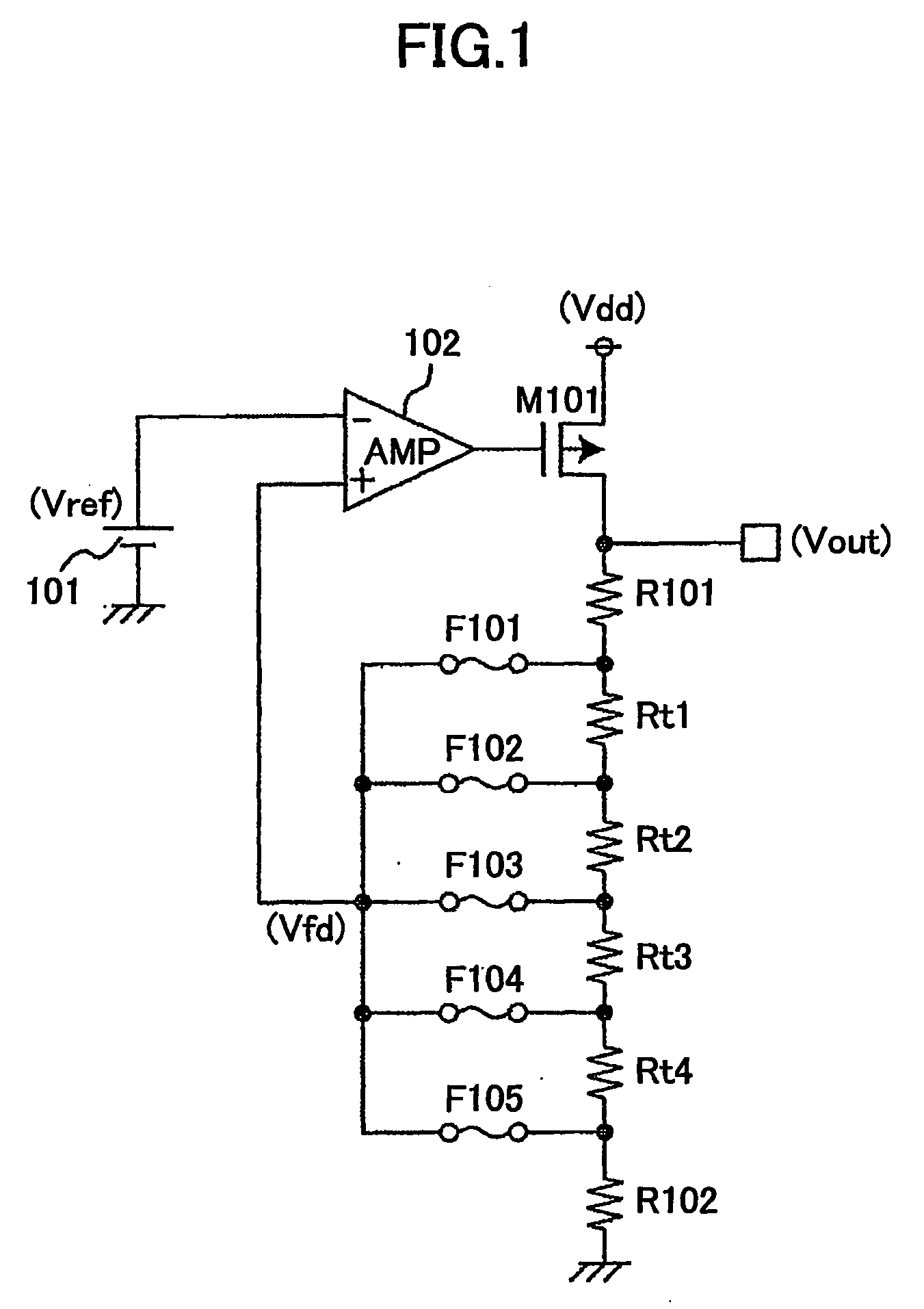Voltage Divider, Constant Voltage Circuit Using Same, And Trimming Method In The Voltage Divider Circuit
- Summary
- Abstract
- Description
- Claims
- Application Information
AI Technical Summary
Benefits of technology
Problems solved by technology
Method used
Image
Examples
Embodiment Construction
[0037]A description is given, with reference to the accompanying drawings, of an embodiment of the present invention.
[0038]FIG. 4 is a diagram showing a voltage divider circuit 1 according to the embodiment of the present invention.
[0039]Referring to FIG. 4, the voltage divider circuit 1 includes a first resistor circuit 2 and a second resistor circuit 3 connected in series between a voltage V1 and a voltage V2. The voltage divider circuit 1 outputs a voltage V3 from the connection of the first resistor circuit 2 and the second resistor circuit 3.
[0040]Further, the first resistor circuit 2 includes adjusting resistors Ra1 through Ran and fuses Fa1 through Fan, and the second resistor circuit 3 includes adjusting resistors Rb1 through Rbn and fuses Fb1 through Fbn, where n is an integer greater than one (n>1). The first resistor circuit 2 and the second resistor circuit 3 have the same circuit configuration.
[0041]In the first resistor circuit 2, the adjusting resistors Ra1 through Ra...
PUM
 Login to View More
Login to View More Abstract
Description
Claims
Application Information
 Login to View More
Login to View More - R&D
- Intellectual Property
- Life Sciences
- Materials
- Tech Scout
- Unparalleled Data Quality
- Higher Quality Content
- 60% Fewer Hallucinations
Browse by: Latest US Patents, China's latest patents, Technical Efficacy Thesaurus, Application Domain, Technology Topic, Popular Technical Reports.
© 2025 PatSnap. All rights reserved.Legal|Privacy policy|Modern Slavery Act Transparency Statement|Sitemap|About US| Contact US: help@patsnap.com



